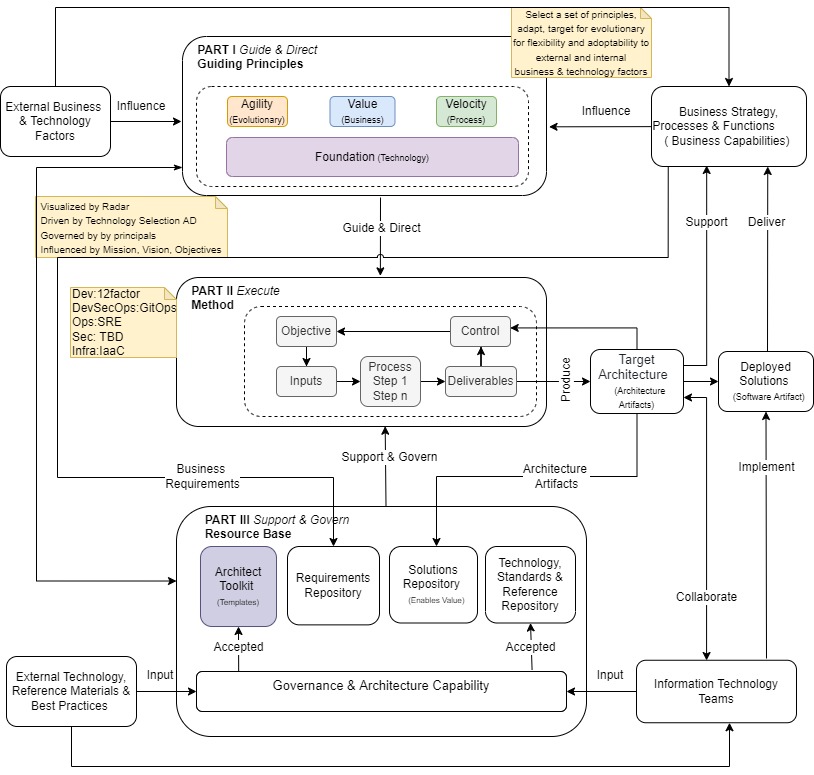ASAF Structure
This part represents overall organization of the framework. ASAF components works together in its entirety, however the expectations are that each architect should evaluate and tailor the framework and it’s parts to his or her particular situation. It is possible to modify some elements, e.g. select a different set of principles, leave out some elements, or create other new elements within each part of the framework.

Figure 1. Agile Software Architecture Framework
Guiding Principles
This part establishes high-level guiding principles that directly influence the agile architecture method, in particular the objectives for the future state architecture. These principles, although universal and provided in the text below, are not dogmatic and final, but rather evolutionary and responsive starting points. They should be evaluated and tailored by the architect in order to:
- Ensure alignment with corporate business enterprise architecture mission, vision, objectives and strategy
- Demonstrate awareness of and sensitivity to internal and external opportunities and threats within different environment domains: technology, business, regulatory, market, etc.
- Match the principles to company’s strength and weaknesses in various subsystems within value stream: logistics, management, finance, human resources, technology, sales and marketing
Method
Agile Software Architecture Method or ASAM is the foundation of ASAF. It provides in depth, detailed description of the ASAM – an ordered sequence of steps on how to develop and apply software system, software delivery and software operations architecture.
Resource Base
This part contains structured repositories with architecture artifacts and building blocks, such as deployed solutions architectures. In addition it includes ready-to-use toolkit and selection of reference models; templates, technology catalogs and technology selection process templates; materials that help establish software architecture function within an organization, including necessary skills, process, roles and responsibilities.